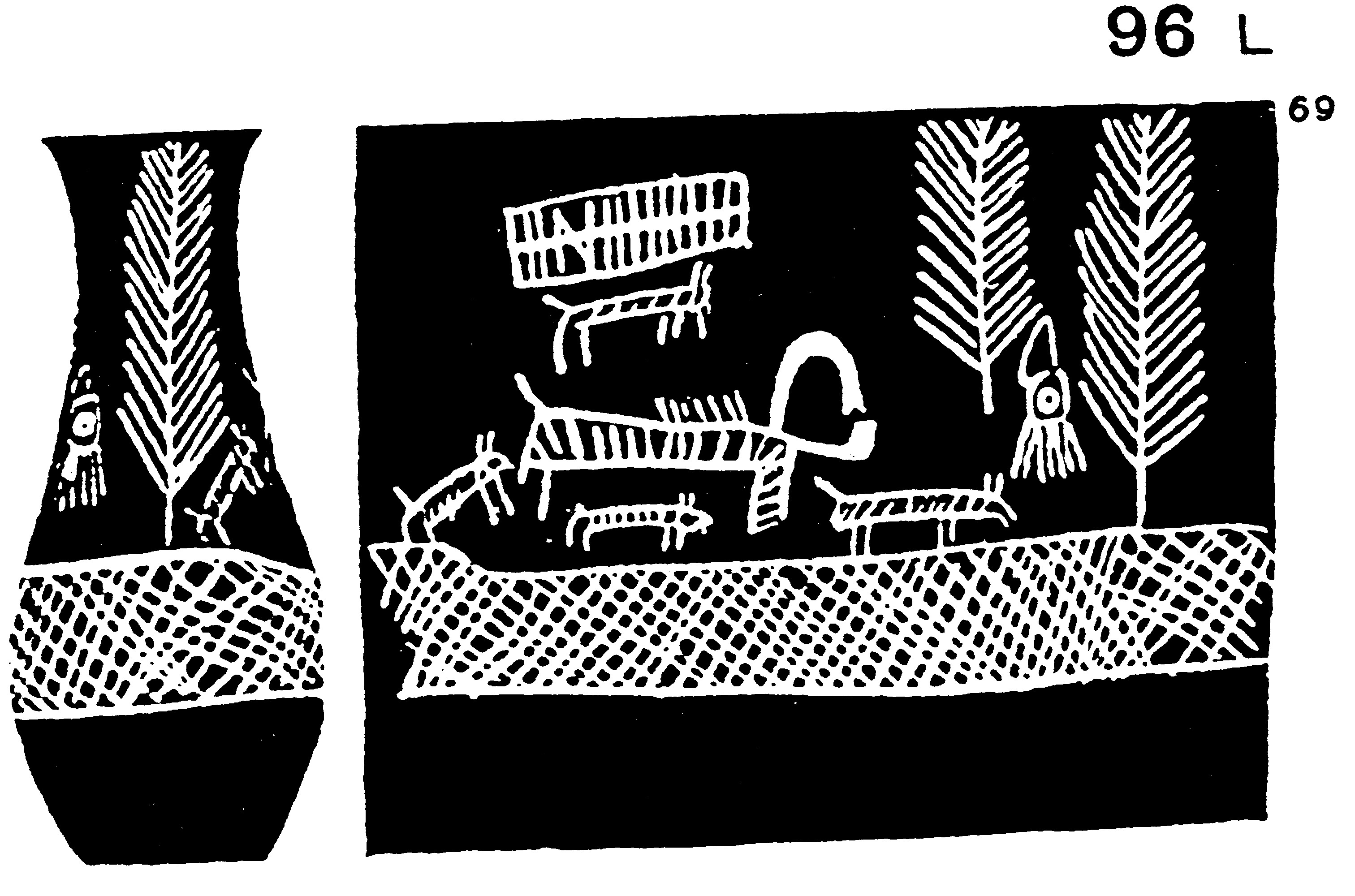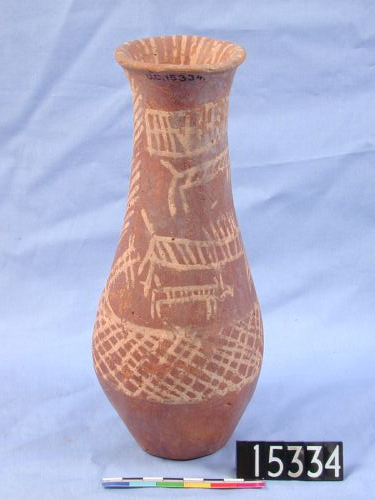C-Ware – bottle C-0434
By Droux, Xavier
Archaeological site unknown
London, Petrie Museum, UC 15334.
Date : Naqada IA–IIB
General range of C-ware production
Material : Nile silt (Painted)
Preservation : Intact
Decoration preservation : Very good
Decoration
A large, horizontal crosshatched band is painted at the level of the maximum diameter. A figural scene is shown above it. A long, vertical plant design that consists of a stem with oblique 'branches' on either side, raises from that band and nearly reaches the rim. To the left is a similar, but shorter, plant motif; between the two is a so-called 'tassel' design. Further to the left is a series of five heavily stylised animals, which all face toward the right and all have their body hatched. The largest animal, in the centre, is a (wild) bull with large crescent-shaped horns; it has a short tail and amane is depicted on its neck. Its front legs are not depicted. The other four animals, similar to one another, are likely dogs. By comparison with similar scenes, it can be deduced that they are hunting the bull and surrounding their prey: one is placed between its legs, one just in front of it, on above its back, and the last one behind it in an oblique position, as if trying to bite the bull's hindlegs, althought there is no contact between the two animals. A horizontal band, divided in two parts by a vertical line running in its middle, is hatched.
The inside of the rim is painted with a continuous series of vertial lines.
Dimensions (cm)
21
8.4
Additional information
Vi 40
flat base
Outside and inside lip
References
1920
Prehistoric Egypt. British School of Archaeology in Egypt & Egyptian Research Account, twenty-third year, 1917. London
, pl. XXV, 69.1921
Corpus of prehistoric pottery and palettes. British School of Archaeology in Egypt & Egyptian Research Account 32, 23rd year, 1917. London
, pl. XVII, 96L.1952
Manuel d'archéologie égyptienne I: 1; les époques de formation, la préhistoire. Paris
, 271, fig. 173.2009
Les peintures sur vases de Nagada I–Nagada II: nouvelle approche sémiologique de l'iconographie prédynastique. Egyptian Prehistory Monographs 6. Leuven
, cat. 143.2019
Le taureau à l’époque prédynastique et son importance pour le développement de l’iconographie royale – avec un excursus sur l’origine du sceptre héqa, in: Aufrère, Sydney (ed.), Les taureaux de l’Égypte ancienne. Publication éditée à l’occasion de la 14e Rencontre d’égyptologie de Nîmes. Égyptonimes 2
, 39–41, fig.5.

